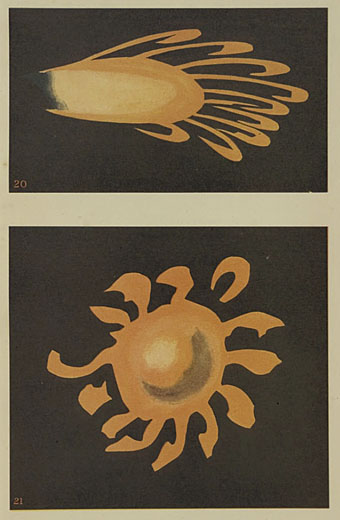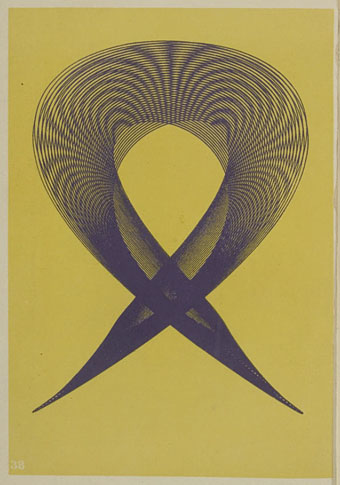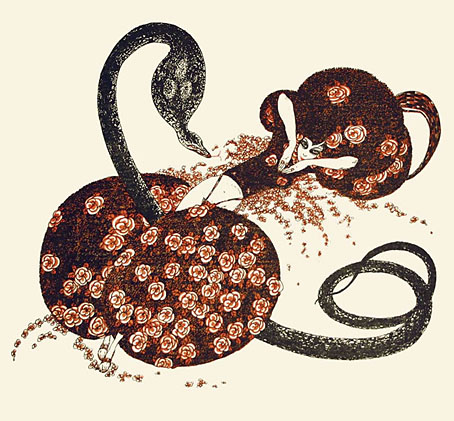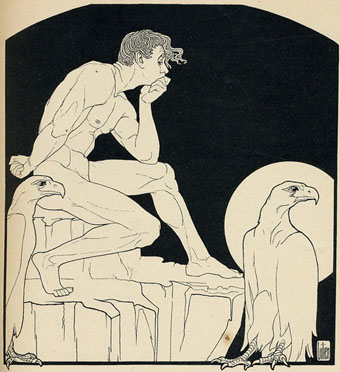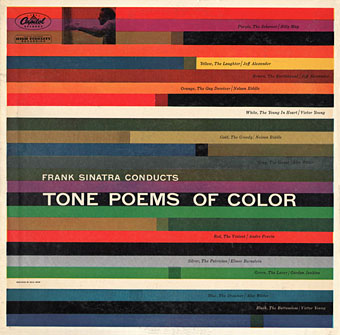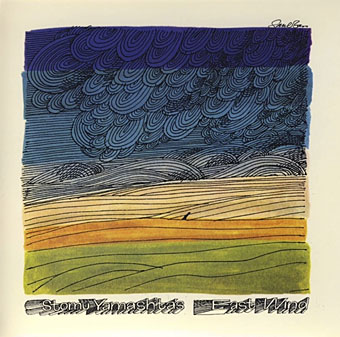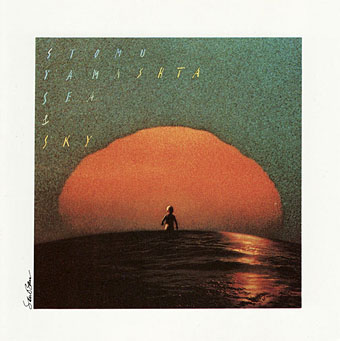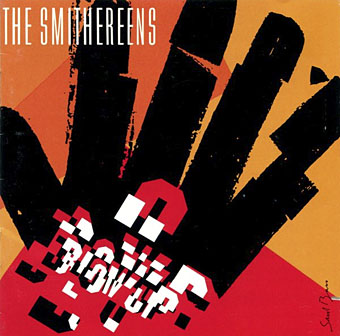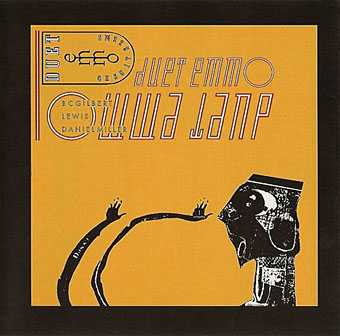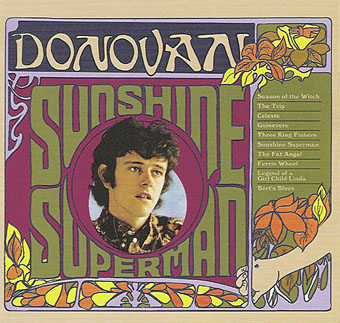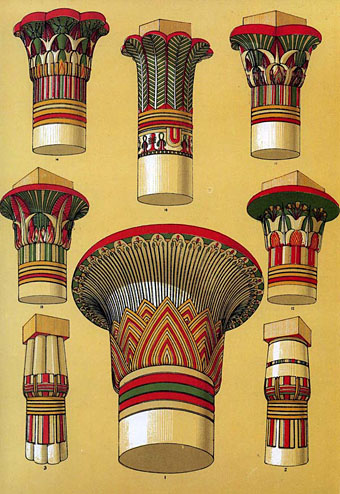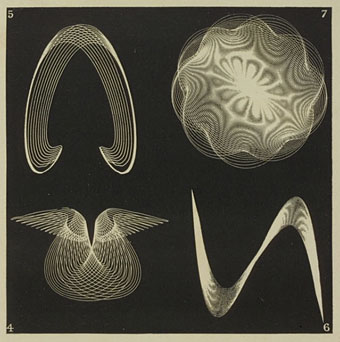
Like yesterday’s squid, some of these Theosophist illustrations from Thought-Forms (1905) by Charles Webster Leadbeater & Annie Besant, and Man Visible and Invisible: Examples of different types of men as seen by means of trained clairvoyance (1902) by Leadbeater alone, have been reproduced for years in books yet you seldom see the complete set. The University of Heidelberg has scans of both volumes so I’ll direct the curious there for detailed explanations of the illustrations which were intended to graphically portray mental states, and the auras which Theosophists believed surrounded the human body. The diagrams above are harmonographs created by pendulum motion, and evidently seemed sufficiently strange for Leadbeater and Besant to interpret them as representations of emotional experience. They’ve always made me think of the similar pendulum drawings used by Saul Bass in his Vertigo title sequence, although I’ve never seen any indication that Bass had these particular diagrams in mind. In the pictures below there’s also a suitably spiky depiction of an angry person’s aura, and representations of music emerging from a cathedral in the form of polychrome mushroom clouds.
